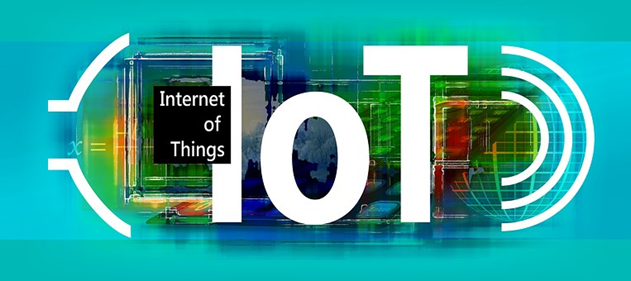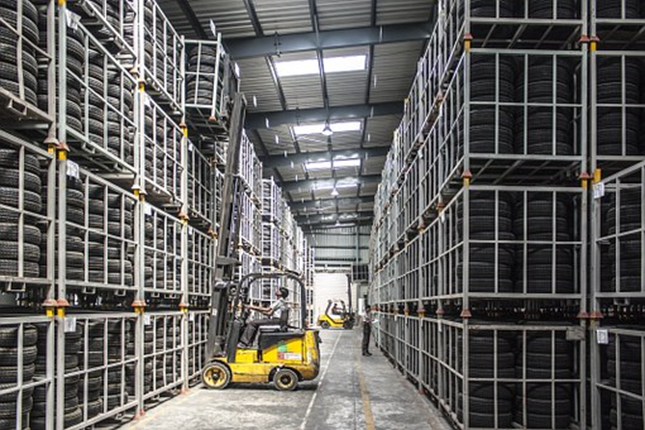What You Need To Know About Internet Of Things (IoT) in Supply Chain
Share

The Internet of Things, also referred to as IoT, is set to have a huge impact on logistics and the supply chain. The Internet of Things will provide manufacturers with a lot of information and new business insights about their supply chain and will help them drive operational efficiencies.
In this article, we’ll provide an analysis of how IoT will impact the supply chain and describe specifically how IoT will enhance warehouse management. But before we do so, let’s take a look at what IoT is in the first place.
What is the Internet of Things?
The internet of things can be described very simply as physical objects that have been connected to the internet in some way or shape. One example of an IoT device is a smart home device, such as a smart light which can be operated through an app on your phone. You can turn the light on and off, change the brightness and the colours of the light without having to leave the couch.
Note that a distinction needs to be made between objects that were specifically created to connect humans to the internet — such as laptops, smartphones and tablets (these are not IoT devices) — and everyday items that are connected to the internet which are IoT devices. These include smart home appliances, connected vehicles, wearable devices and smart sensors.
While the term IoT has been discussed a lot over the last few years, IoT is still in its infancy early adopter phase. The State of the IoT & Short Term Outlook 2018 by IoT Analytics estimates that in 2018 there are 7 billion active IoT devices, but that this is expected to grow to 9.9 billion in 2020 and 21.5 billion by 2025 at an annual growth rate of about 10%. In terms of dollar value, the global IoT market is estimated to be $151 billion in 2018 and forecasted to be $1,567 billion by 2025. It’s certainly one to watch and an area to invest in or consider applying to your current business model.

How does IoT impact on the supply chain?
Every day there are millions of products that need to be shipped, tracked and accounted for by trucks, ships and people. Connecting these goods, assets and people in the supply chain through IoT creates efficiencies and streamlines processes saving companies time & millions of dollars a year.
IoT devices have the capacity to impact all aspects of the supply chain, including warehouse management, transportation and logistics, and last mile delivery to the end customer. Manufacturers can drive operational efficiency, reduce theft and counterfeit, and deliver great customer service by acting on the data coming from the IoT devices in their supply chain.

There are different types of IoT devices in the supply chain, such as autonomous vehicles, sensors that optimize energy consumption, and sensors that alert employees of potential dangers in the workplace. The most exciting example of how IoT is used by manufacturers though is by embedding smart sensors in a product’s packaging. After all, this allows manufacturers to trace their products throughout the entire supply chain direct into their customer’s hands and not just one isolated part of a journey.
In case you missed it: Turning Your Supply Chain Digital is the Future

Warehouse Management
Some manufacturers own their warehouses whereas others store their products in outsourced warehousing facilities and distribution centres. Whatever the situation is, it’s of utmost importance to manufacturers that they can deliver their products in optimum condition to their customers in the fastest, secure most cost-efficient way.
UCOT’s IoT sensors can really drive these efficiencies and automate real-time inventory visibility, detect damaged products, and prevent counterfeit, substitution and theft.
Real-time inventory visibility
Products get moved in and out of warehouses all day long and it’s really hard for manufacturers to see how much stock is in a particular warehouse at any stage especially when their products are stored in a third party warehouse. In these instances, real-time visibility of stock levels is seldom achieved. Sometimes goods are left in the loading dock and left unreported for days, products are not scanned outbound delivery and some products are even stolen and never seen again.
Manufacturers that adopt UCOT’s technology don’t require a warehouse to report their stock levels anymore as the sensors attached to product boxes/pallets report back to a manufacturer where the products are at any stage. UCOT’s sensors can even send an alert to manufacturers when their goods are leaving the warehouse if they weren’t yet scheduled to leave. This will help them with loss prevention as it will become a lot harder for people with ulterior motives to steal the products.
Detect damaged goods
UCOT’s sensors can detect environmental factors, such as temperature, humidity and pressure. UCOT’s supply chain ecosystem allows manufacturers to pre-set the conditions in which their products need to be stored in the form of smart contracts. UCOT’s platform uses these parameters to monitor whether the goods are in optimum condition and has the ability to alert the manufacturer in two ways.
- It can alert manufacturers before the damage has occurred to allow the manufacturer to take precautionary measures. An example of this is sending an alert when the temperature is going up and is coming closer to the threshold, so that the manufacturer can alert the warehouse operators who can in turn fix the temperature issue before the goods are damaged.
- Alternatively, UCOT notifies the manufacturer when the damage has already occurred, so that the manufacturer can replace the damaged products. An example of this is when a box or pallet of glass bottles has been dropped and the sensors have noticed that the pressure in the bottles has gone above the threshold or that the bottles have started leaking.
Prevent counterfeit and substitution
Especially in cross-border trade with China counterfeit and substitution are big issues. Product substitution and product tampering can take place anywhere in the supply chain.
Traditionally identifying where substitution has taken place has been a blind spot for manufacturers that is hard to pinpoint and solve, UCOT’s sensors can detect when a product has been opened or tampered with and report this back in real-time to the manufacturer. This not only helps the manufacturer in the short term by being able to solve the issue, it will also prevent any reputational damage that would have occurred if the end customer had received a counterfeit product.
Conclusion
In this article we’ve shown how IoT will impact on the supply chain and provided an example of how warehouse management can be improved by utilizing IoT.
There are many more use cases for the use of IoT in the supply chain, such as transportation and last mile delivery to the end customer.















